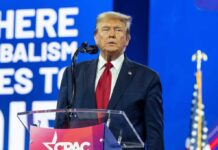
Volvo is set to shake up the American market for electric vehicles (EVs) this summer with the introduction of the China-made EX30, with a suggested retail price of $35,000. That will put it at $8,000 cheaper than Tesla’s Model Y.
Volvo is owned by China’s Geely and is using its preexisting U.S. presence to skirt the 27.5% tariff imposed on Chinese vehicles entering the U.S. market. Volvo’s manufacturing plant in South Carolina qualifies the company for a tariff refund, effectively eliminating the tariff for Geely. Despite their international ownership, Volvo argues it maintains its Swedish design ethos and operational independence. Even while acknowledging the existence of the tariff loophole, a spokesperson said, “Volvo pays all legally required duties on cars and parts.”
Volvo to legally skirt tariffs to sell China-made electric vehicles | Just The News https://t.co/1IfQr2fBZ6
— John Solomon (@jsolomonReports) April 25, 2024
The so-called “Inflation Reduction Act of 2022” allows Volvo to designate leased vehicles as “commercial,” which opens another loophole allowing the company to offer the EX30 at an even more reduced effective price of $27,500. That applies even though the vehicle will be constructed entirely of Chinese-made components, which would normally exclude it from the lavish subsidy.
Tesla and other U.S. automakers are already feeling the pressure coming from cheaper Chinese competitors. Tesla recently reduced the price of its Model Y by $2,000 in an effort to head off the advantages Geely will soon exert over American manufacturers.
The entry of Volvo’s EX30 into the U.S. market underscores a broader trend of globalization in the automotive industry, where international cooperation and competition intersect at the juncture of innovation and consumer choice. Volvo’s strategic use of U.S. manufacturing sites allows it to sidestep tariffs and place it within the beneficial economic frameworks intended for domestic manufacturers.
The implications for U.S. automakers are profound. As the EX30 and similar models capitalize on regulatory and market opportunities, they set new precedents for how foreign-owned companies might leverage U.S. policies to their advantage, challenging domestic manufacturers to innovate or face declining market shares.
As this trend continues, it raises questions about the future of the U.S. auto industry and its ability to compete with foreign manufacturers who enjoy the dual advantages of lower production costs and strategic market access. This could become the so-called “extinction-level event” for traditional U.S. automakers unless significant adjustments are made in policy and practice.
































